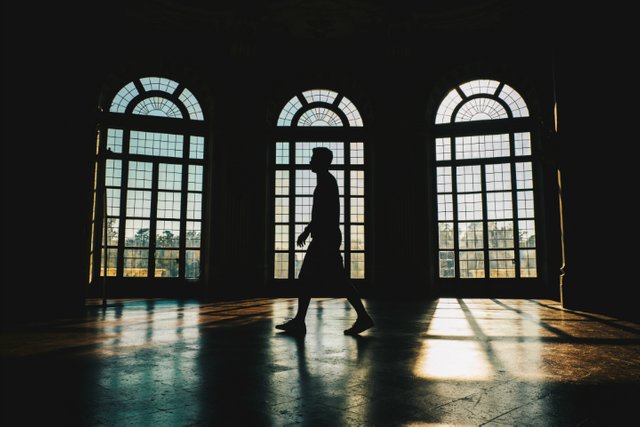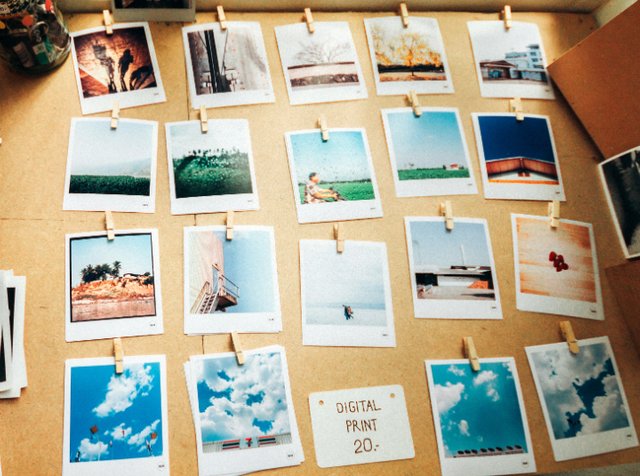Incredible You! - Improve Your Memory Build A Palace For Your Mind

By the end of this article, I am going to improve your memory. It is a bold claim, but I'm confident I can do it if you adhere to some easy to follow directions. You will need a pen, some paper, and your attention.
First though, let's get a baseline measurement for how good your memory is right now. So I want you to memorise the twenty items I've listed below; take a few seconds concentrating on each word.
When you feel you have committed them to memory, read on. Even if you think; gosh, I could never remember 20 things! It's okay, it's just a bit of fun, have a go, and then read on.
- Tennis Ball
- Nike Running Shoe
- Purple Space Hopper
- BMX Bike
- A Slug
- Tall Measuring Beaker
- Cheese Burger
- The Lincoln Memorial
- A Box Of Biro Pens
- A Vampire
- Red Rose
- Dozen Eggs
- Dishcloth
- Small Brown Puppy
- Bottle Of Aftershave
- Glass Table
- Rug
- 3 Wine Glasses
- Albert Einstein
- Can Of Coke
What Is A Mind Palace?
In the BBC drama series Sherlock Holmes, which first aired in 2010. Viewers of the show were introduced to the concept of the Mind Palace.
The indubitable detective Sherlock Holmes, played by Benedict Cumberbatch, often used his mind palace to solve crimes. The palace was beautifully displayed on screen as a treasure trove of various items that Holmes had stored up over the years.
Holmes used the palace anytime he was stuck on a case. He would close his eyes and imagine himself in a grand room, with shelves piled high of various items, facts, and figures. The genius detective could then examine items assess them, and make links between the facts of the case he was working on, and his memories.
The concept of the mind palace was a great storytelling aid, and a visually stunning effect. Most people who watched the show, and saw Holmes inside his mind palace, were awed at such a thought, and wished that they too could recreate their memories as a mythical room to visit anytime they wanted.
Of course having a mind palace isn't possible, you aren't able to lay out your memories in this way, as it is far too taxing . . .
Or is it?
Well, it turns out that it is not only possible, it is a concept that has been around for thousands of years. So if you want to boost your memory, and recall things with ease, then please; read on.
The History Of The Mind Palace
In 1966, the English, renaissance historian, Frances Yates, described in her book; The Art Of Memory, a technique used by the ancient Romans and Greeks. The method relied on spatial reasoning, and was originally called loci.
Long ago the ancient Greeks realised that human memory worked better when a person is remembering images, and not so well when it is trying to recall text.
Therefore it was suggested that a student trying to remember important facts, should imagine a familiar place in their minds. The place that they were thinking of had to posses lots of discrete loci; places to hide things; so that the student could then 'place' the objects at various places.
Many methods of loci were developed, at first it was thought that if a person wanted to create a set of memory loci, they could just make up a place. That way you could design a huge mansion in your head, then simply place your memories within it.
However it was found that it was much better to use a place you're familiar with. This is because an imagined mansion, still takes up memory power in order to remember how it was designed in the first place. No, it is much better to use a location that is exists in reality, and is familiar, that way little or no effort is requited to recall the place.
This form of spatial memory has been used to great success in more recent times. Various memory masters have used the technique to remember astonishing amounts of data.
The 2006 World Memory Champion, Clemens Mayer, used a 300-point-long journey through his house for his world record, when he memorised 1040 random digits in a half-hour. On another occasion memory specialist Gary Shang used the method of loci to memorise pi to over sixty five thousand digits.
It is easy to think of people like this as special, and quite apart from the rest of us. Even those among us who consider ourselves to have great memories, still marvel at the thought of remembering 65,000 numbers in perfect order.
Whilst people like Clemens Mayer and Gary Shang are dedicated individuals willing to put the time in to improve their memories. They didn't start off as anything special, there was no genetic advantage that they inherited that makes them better at remembering than you.
All these men, and other men and women like them did, was to train their minds using a set of very simple principles that anyone can learn and put to practise immediately.
Let's begin . . .
But before we do, I want you to do something for me; without cheating (what's the point right?), so no scrolling up the page. I want you to turn away and list all the twenty things that I asked you to remember at the top of the page.
You get one point for each answer and a bonus of fifty points if you remember them all in order.
How many did you get?
Whatever the number, let's improve it using loci.
Laying Foundations For Your Memory Palace
As mentioned briefly above, a memory palace is an imagined location where you can store important information, and it is much better if it is a real place, rather than one you completely make up.
So how to choose where your memory palace will be? Well before we move onto that, let's practice by starting off small. We'll build a memory shed together, one that you'll just use for the purposes of this article. Then afterwards, when you're on your own, you can start constructing something more permanent.
Right, let's get started. It is easier when you are trying this for the first time, to start off outdoors. So I want you to think of an outdoor place or route that you know well, however, one that you DO NOT use all the time.
This is very important that it is familiar, but not somewhere like your back garden or your route to work. The reason is, the things I'm about to get you to remember, will last a very long time and so you don't want those things cluttering your actual memory palace!
So maybe you've chosen a local park, or the route to a friend's house that you haven't seen in ages. Or a place you used to work briefly (not long term workplace).
Okay once you've settled on a place you're happy with, we can continue.
The human memory works better with images than it does with text. Also, you tend to remember vivid images better than you do mundane ones, this gives a little clue as to what you're going to do in this exercise.
Here is the list again:
- Tennis Ball
- Nike Running Shoe
- Purple Space Hopper
- BMX Bike
- A Slug
- Tall Measuring Beaker
- Cheese Burger
- The Lincoln Memorial
- A Box Of Biro Pens
- A Vampire
- Red Rose
- Dozen Eggs
- Dishcloth
- Small Brown Puppy
- Bottle Of Aftershave
- Glass Table
- Rug
- 3 Wine Glasses
- Albert Einstein
- Can Of Coke
So what we're going to do now is to place these objects along a route, in the location that you have previously decided on. Each time you place something along the route, I want you to take a few seconds to concentrate on the vivid image you create.
For example the place I have chosen, is the last part of a journey to a park I used to take my daughter to when she was a baby. I'm using part of the journey and a clockwise walk around the actual park itself.
I've chosen this because there are enough features and landmarks, with enough space between them, that I can use to leave things by.
Now for the vivid image, you of course can use anything you want. I just want to give you an example of the sort of thing needed to get the memory to stick. I have put the loci in bold lettering, so you can get a sense for how much detail they contain and the spaces between them.
So, as I approach a crossing, I can see on the other side of the road, a man who instead of a head, has a huge tennis ball on his shoulders. The ball is so big that he has to use his hands to stop himself falling over, and is teetering left and right.
We (I'm carrying my baby girl in a sling on my front) cross the road and he starts to walk in front of us. As we get to the gate there is a solitary Nike running shoe; the left one. It is grey with a red tick on it, and it stands about 4 feet tall. Tennis Ball head man, jumps into the shoe and starts to hop like a kangaroo, but then falls over.
As we carry on past him, we pass the ** left hand corner of the playground** to our left, and I see my 87 year old mother playing on a big purple space hopper. I watch her in awe as she bounces up and down. I turn away from her and carry on walking, I notice at the end of the playground fence there is a cat attempting to ride a tiny yellow BMX bike.
OK, I'm going to stop there, you get the picture now (literally). So now I want you to take those twenty items and place them in ridiculous scenarios along a route just like I have, but using your particular area.
At this point I realise it is easy to sort of do the exercise and carry on reading. However if you're really into the idea of improving your memory, then I highly recommend that you do this right now. It's extremely rewarding and you'll be amazed at the results. What's more, you can impress your friends and be the life and soul of the party, by remembering items from randomly generated lists.
So go on, do it now, I'll wait for you and test you at the end of the article . . .
Building A Permanent Palace
Once you have played around with this technique for a while, there will probably be more important things you want to use it for. Maybe you can never remember your boss's wife's name. Or perhaps there are various things you have to remember for your work.
The thing to remember is this thing works best for items you can list. You can use it for things like names and such, however your mind palace does have its limitations. So it's best to really have a think about what you want to put in there.
The best way to construct a permanent mind palace is to follow a set of simple rules, to help you I will list them below.
Mind Palace Rules
Choose somewhere that is very familiar to you with no hidden parts. So choosing a floor in your office building is fine. However unless you know every inch of the place, choosing the entire building is not.
Use either a place you still visit or stay in, or one from memory, as long as you know it well.
Until you get better at the technique, avoid using your actual house, there are plenty of other places you know well enough.
The place you choose has to have plenty of landmarks and features you can use. So if you use somewhere outdoors like a park or some woods, make sure there are enough distinguishing and distinct features.
There might be plenty of places to put things in your palace. However when you are starting out, try to use features that are far apart. This way you can get a real sense of moving from one place (and therefore one object), to the next.
When you first create a palace and start to leave objects there, make sure you visit regularly. You can scale these visits back to once in awhile, when you get more familiar with it.
That's it, follow these six simple rules and go and create your personal mind palace!
The Uber Palace
When you become a 9th level mind palace practitioner, you may find that your palace is getting a little cluttered. Or perhaps you use one to remember certain things, and you have another palace for others.
At that point you can start stitching your palaces together into one mega-palace that you can roam around in taking leisurely strolls through pleasant memories.
In order to do this, you are going to have to break some of the rules of the mind palace. Remember when I said that the place you come up with has to be real? Well in order to put your various mind palaces into one huge structure, you're going to have to bend that rule slightly.
What you need to do, is to create an 'exit' in your familiar place. However this exit isn't real, it is a magic door that you insert somewhere in your palace. Do not use a real door, your magic door will exist in a place that shouldn't have a door.
For instance, maybe you were lucky enough to grow up in a house with a swimming pool and you have used that for your mind palace.
In that case a swimming pool could be the best place for your exit (as long as you haven't put stuff there you need to remember). So you could have a door at the bottom of the pool, or floating magically above it. Or maybe even diving into the pool could be the door, and that action would exit you from that part of your palace into another.
When you come into your new place, the entrance point will be where it always is. This takes some practice and imagination; however it is a very fun exercise to do, so well worth it.
Test Time!
Obviously you have been distracted somewhat by reading this article. However if you did commit to placing those 20 items along the path of your temporary palace. Without scrolling up, list them right now, write them out or type them so that you can check the order.
Remember 1 point for each correct one, 50 bonus points for the correct order.
. . .
How many did you score? I'm guessing better than your first try right? In fact if you have really committed to this, I wouldn't be surprised if you got all twenty!
If you didn't do it the first time round, now you've finished the article; (after voting for it of course!), scroll back up and try it now. Record your results before and after using the loci method.
Now go off and impress yourself, and the world with amazing feats of memory!
Massive shoutout to @frostyamber who, through here comments gave me the inspiration to write this article; thank you!!
Further Reading:
Related Reading:
Incredible You! - Table of Contents
WHAT IS YOUR MEMORY LIKE? DO YOU STRUGGLE TO MEMORISE CERTAIN THINGS? EVEN IF IT IS GOOD WOULD YOU LIKE TO IMPROVE IT? DID YOU TRY THE EXERCISE ABOVE?
AS EVER, LET ME KNOW BELOW!





Really interesting concept. Could definitely see this being helpful when practiced on a regular basis. What I've always done is the visualization of the object or use of an anagram. For something like the purple space hopper, I simply abbreviated it to PSH, the first 3 letters of my last name haha. everyone has different tactics but this is one that I haven't really thought of. cool share, cheers
very nice post upvoted
My friend used this to get through med school, apparently it really works
It does work and I tell my kids in class every day to stop learning like parrots and start learning like this - but if they listen, that is the other question. Excellent post - resteeming
thanks bro nice blog
Good blog my friend thaks @cryptogee
something like the purple space hopper,
You have some amazing content! So happy to have found you on here! Keep up the awesome work!